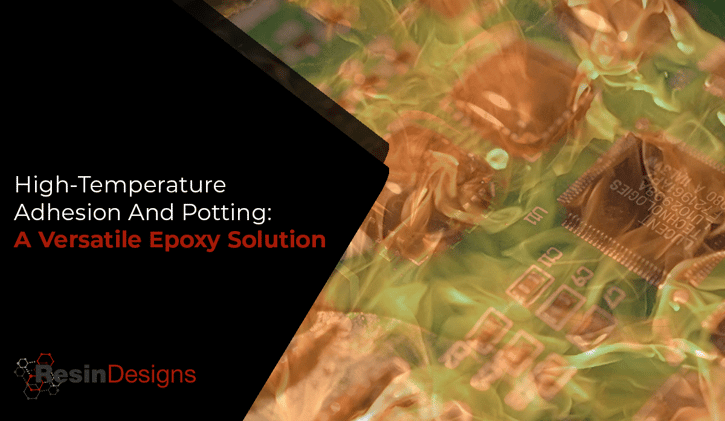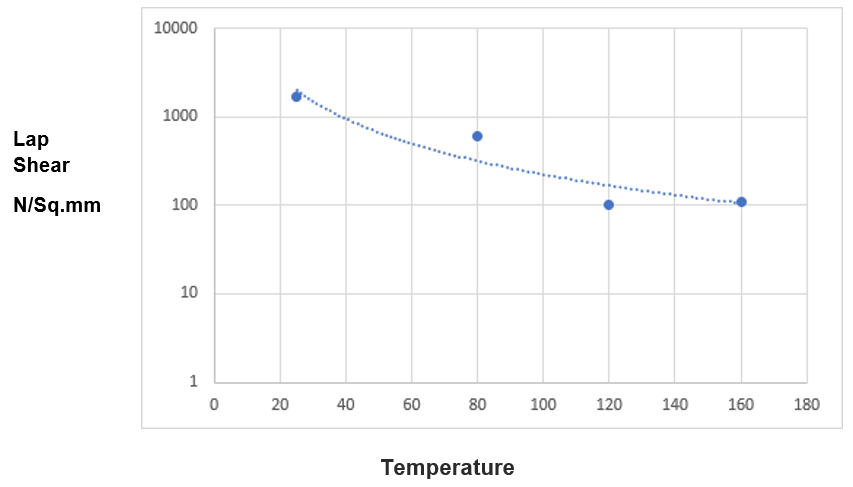
Things are getting hotter out there, and it can’t all be blamed on global warming! As manufactured products continue to get smaller and lighter, there is often the undesired side effect of increased generation of heat. This is especially true in the electronics and power industries, but it is also a challenge faced in industries, including:
- Automotive/EV/Battery (Engines, brakes, assemblies…)
- White goods/appliances
- Medical devices and wearables
- Power generation and conversion/inversion
- Renewable energy manufacture and control
- And many others….
We at Chase Corporation through our Resin Designs group have extensive experience in the design of adhesives and encapsulation materials capable of withstanding higher temperature demands. Recent developments include our two-component epoxy, 2E25, which will be discussed a little later.
What Causes High Temperatures on Circuit Boards
So why are things getting so hot, and what does this mean when designing adhesives and potting materials? Within each of the industries noted above there are multiple and unique answers. There is not enough time and space to discuss them all here, but some of the highlights include:
Electronics:
Devices are getting smaller, electrical traces are getting closer together, and integrated circuits are getting faster and hotter. In addition, the old standby: the cooling fan, has gone the way of the Dodo. The result is a need for adhesives and potting materials capable of continuous resistance to high temperatures.
EV and Battery:
Similar to electronics, smaller and lighter results in higher heat and temperatures. In addition, massive increases in voltages and charging speed requirements generate heat like crazy!
Power generation and inversion:
Electricity is steadily supplanting non-renewables and it does not seem to be slowing down. The result is an increased need for smaller, lighter, cheaper devices to control power and invert from AC to DC and the reverse. Typical solar or EV charging infrastructures are designed with multiple power inverters per unit generating lots of heat!
Medical Devices:
In concert with the electronics industry, medical devices including wearables are becoming ubiquitous. The same three factors of smaller, lighter, and cheaper come into play here as well.
Related Article: Choosing the Right Thermally Conductive Polymer for Your Application
In addition, across many of the situations noted above, there is the added need for some form of chemical or chemical vapor resistance. An example would be detergent resistance for washable and wearable medical devices. Another example would be acidic or basic chemical resistance in battery assembly. A third might include oil or transmission fluid resistance in automotive engines or brakes.

Related Article: Keep Your Electronics Cool with Thermal Management Materials
Resist Temperature and Chemicals:
Benefits of Epoxy Coatings
Epoxies have been around for a long time, and there is an almost infinite array of options to choose from. It can certainly be overwhelming, and some guidance can be of great value.
Epoxies in general are considered sort of a middle-of-the-road type of chemistry with moderate resistance to both temperature and chemicals. As such, there are chemistries capable of higher performance in either area.
Epoxies benefit from their relatively high strength which comes at a reasonable cost. However, they may require two-component mixing processes and incur longer cure times, limiting high-speed processing. The costs and benefits should therefore be evaluated.
2E25 Epoxy Coating and Adhesive
Resin Designs chemists have developed hybridized epoxy chemistry in an attempt to take advantage of the positives of epoxy chemistry and improve on some key properties. Through the addition of hybrid alternative chemistries within the backbone structure, we have been able to substantially increase the temperature resistance performance as well as add resistance to many common industrial chemicals. The result is a polymer that can be used as an adhesive or potting material at continuous operating conditions of up to 200 C with chemical exposure.
Resin Designs 2E25, a two-component polyamide-modified epoxy, has recently undergone extensive testing for lap shear resistance at various temperatures. The results are shown in the graph below. While shear resistance drops off as temperatures rise, as expected, the modifications to the epoxy backbone result in an asymptotic drop-off that levels off above numbers expected to result in failures.

Key properties of Resin Designs 2E25 include:
- Continuous operating temperature up to 200C
- High shear strength retention across the temperature range
- Resistance to many common industrial chemicals
- Variable mix ratio for flexible product hardness and flexibility
- Relatively long open time for workability
As a supplier of electronics protection polymers and coatings, Chase Corporation and our employees can help you with an unbiased approach to evaluating your application and process. We’ll show you how to maximize efficiency, minimize cost, and improve product reliability. Our outstanding manufacturing and technical support groups can provide your organization with reliable global supply, unmatched quality, and superior technical support.
Please contact us today to discuss your application.









